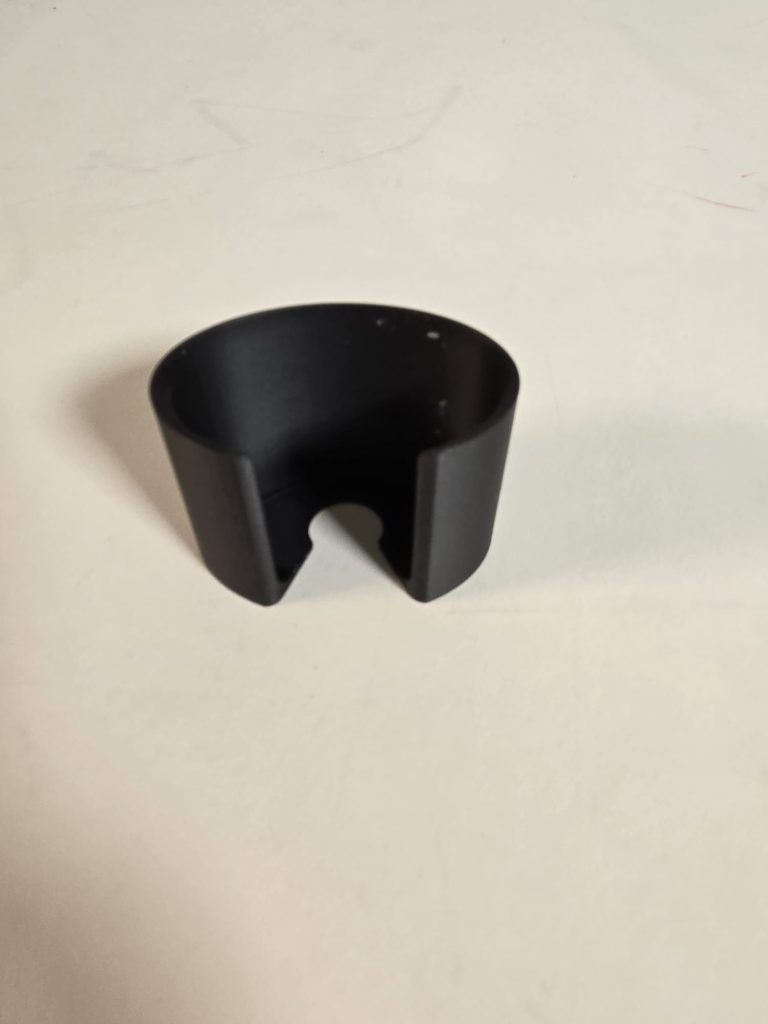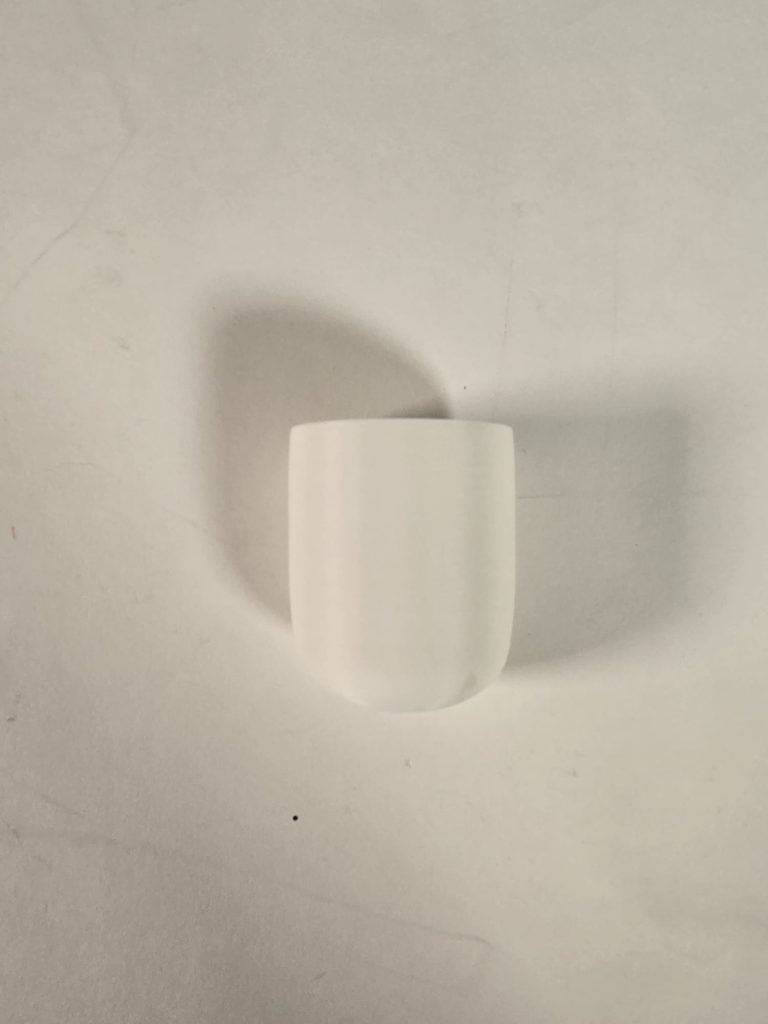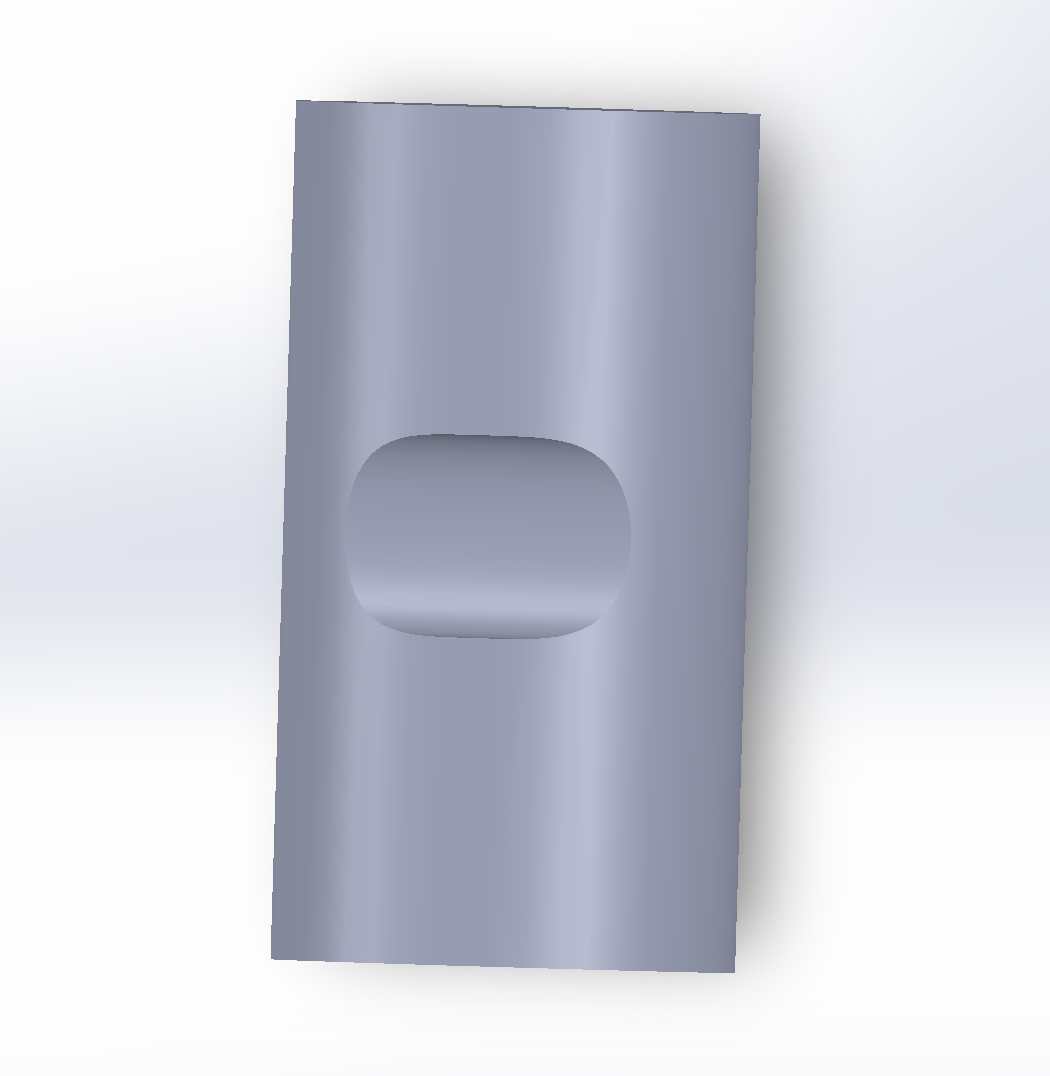5th (Final) Iteration of Prototype
This iteration introduced improvements to both major components of our device, as well as to the insert used during the casting process. To reiterate some of the design choices previously outlined in the documentation for the fourth prototype iteration, the walls of the positioning component were raised up to a final total height of 3.4 cm, and all surfaces were filleted to eliminate right angles. These changes resulted in a more streamlined and ergonomic design while also enhancing structural integrity, reducing the risk of breakage at the bottom due to insufficient mechanical reinforcement. The black 3D-printed positioning component, shown in the top left, represents the final version we incorporated into our prototype.
In this final iteration, the squeezing component was redesigned with a more ovular shape based on feedback from our team interview. The elongated, flatter sides were intended to provide users with a clearer sense of hand placement and orientation. Additionally, these flatter surfaces were positioned to align with the pressure points on the interior walls, enhancing the efficiency of force transmission during use.
By this point, the general shape of the insert had already been finalized, leaving the design of the hard covers, which were intended to encase the pressure points, as our next focus. Our immediate approach to designing these “shells” was to ensure that they matched the curvature and dimensions of the pressure points as closely as possible. Specifically, the shells were designed based on the dimensions of the indents formed in the insert, which defined the shape of the pressure points. When the shells were printed and positioned over the pressure points, they fit almost perfectly—like a helmet—which we were extremely pleased with.




Recent Comments